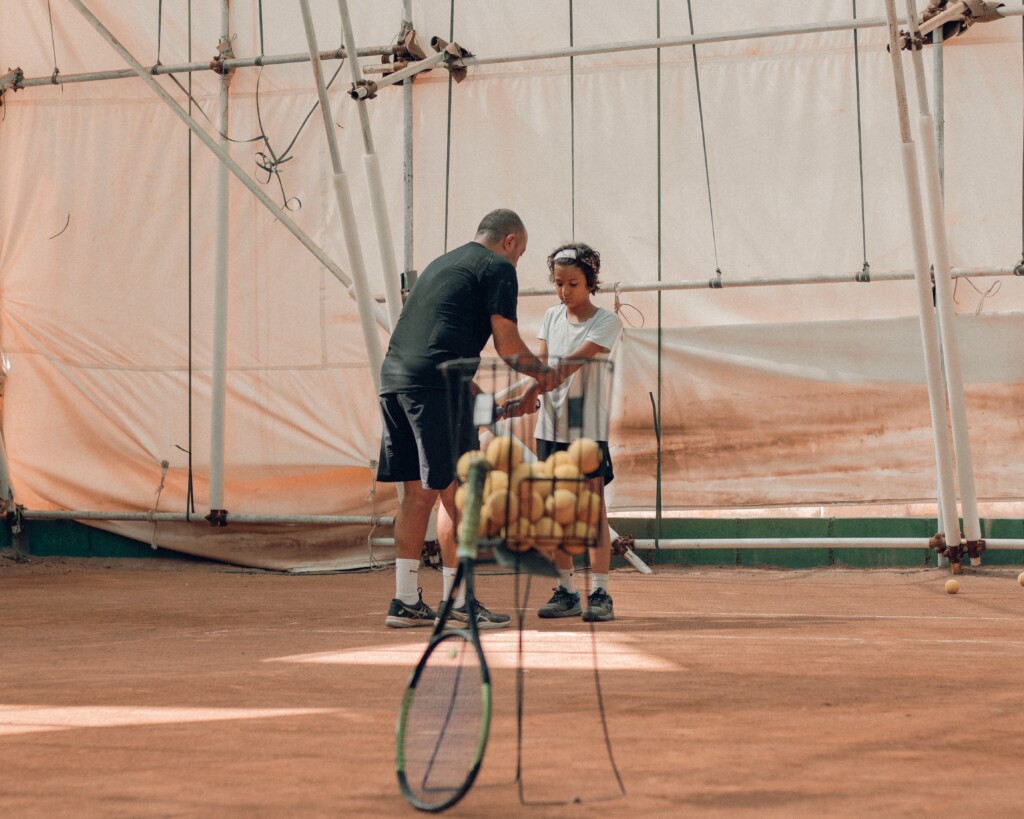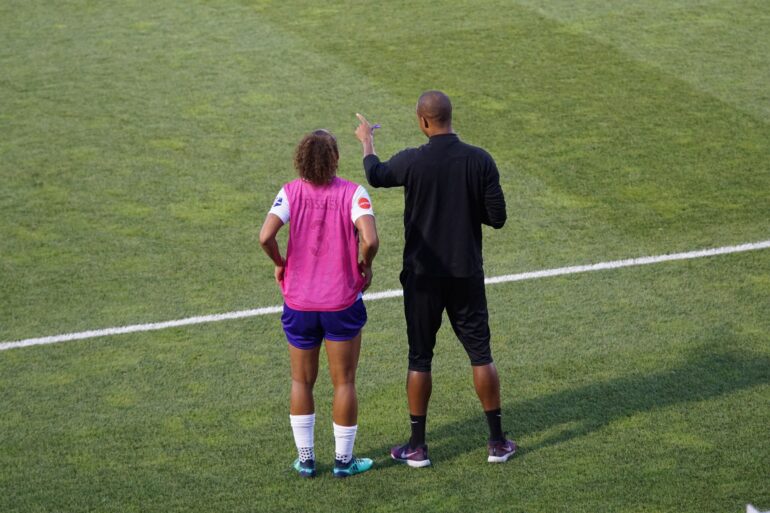As part of our “You Said It” Op-Ed series, we invite contributors to submit their opinion pieces. Have a submission? Contact us.
How many athletes must come forward with wrenching stories of abuse before something is done to protect them? In 2022, 21-time Grand Slam doubles champion Pam Shriver shocked the world of tennis when she joined the chorus of courageous women who have gone public with stories of athlete abuse. One year later, Kylie McKenzie, a once-promising junior player with a clear line of sight toward a bright future on the women’s professional tour, sued the United States Tennis Association for failing to keep her safe from her coach.
Shriver and McKenzie are among countless young athletes, in countless sports, who have experienced abuse at the hands of their coaches. Once, they were silenced, either by themselves or others. Now, they have brought their experiences into the light of day to be voices for change.
All too often, abuse — whether mental, physical, emotional or sexual — involves reshaping the athlete’s sense of reality, making it difficult for young players to trust themselves enough to stand up to their coach. That kind of reality-destroying psychological abuse has a name: gaslighting. And it’s not okay.
What is Gaslighting?
Gaslighting is a form of psychological manipulation where a gaslighter sows seeds of doubt and confusion in the gaslightee’s mind, undermining their confidence and agency to think clearly, make good decisions and manage situations effectively.
While it is more often men who are gaslighters and women the gaslightees, it is power, not sex, that determines which party does the gaslighting. In sport, female athletes are abused more often by male coaches, but it is important to remember that this male-over-female power dynamic is not always the case.
The Gaslighting Grip on Athlete Safety
The coach–athlete bond is sacred for young athletes, requiring from the coach a delicate balance of applying stress to fuel optimal athletic development, while also showing empathy for the human being inside. A coach and athlete engage on many levels — intellectual, physical and emotional — and building those bonds involves implicit trust. Trust, once established, is sacrosanct in a coach-athlete relationship, which is precisely why the grooming period — or the time when coaches establish a foundation for exploiting the imbalance of power before boundaries are violated — is so critical.
The promise of extraordinary athletic achievement, coupled with feeling truly special in the eyes of someone who may have even more influence than a parent, makes this relationship particularly vulnerable to a gaslighting dynamic. After all, when a coach is responsible for their growth, development and possible stardom, it isn’t just hard for an athlete to say “No” and walk away — it can feel career-ending. The coach represents a full developmental program, which includes managing relationships with parents and sponsors, as well as all technical, tactical, mental and wellness elements of training. The athlete must be all in — even if lines are crossed and gaslighting, discomfort and stress hide under the guise of “tough coaching.”
Consequences of such coaching can be disastrous. While some strategic stress — the right dose at the right time in the right way for that particular individual — is endemic to athletic training, chronic stress, if not offset by positive experiences that catalyze health-promoting biochemistry, can be toxic for the brain and body. The long-term effects of chronic stress from psychological, physical, emotional or sexual abuse can be life-altering. Moreover, gaslighting experiences can impair future relationships, derail athletic performance and significantly impact an individual’s capacity to trust in the future. The cortisol-driven inflammatory effects endemic to childhood adversity can affect the structure and function of the developing brain; wreak havoc on the immune system’s capacity to effectively do its job; and negatively impact mental, behavioral and physical health outcomes in a graded and linear manner — as demonstrated by the landmark Adverse Childhood Experiences (ACE) study and myriad replications. In other words, a greater dose of adversity equals worse health outcomes. Having four or more ACEs is strongly associated with at least seven of the top 10 causes of death in the United States.
What Gaslighting Is and What It Is Not
Given the word’s popularity in modern discourse, it is essential to ask what gaslighting is and what it is not, rather than further muddy the waters of this nuanced topic for coaches, athletes and families. For example, it is gaslighting when a coach cultivates an unhealthy and dangerous dependency by convincing an athlete that they will “NOTHING without me!” This kind of behavior works to ensure that an athlete does not leave the grips of a power imbalance that defines gaslighting.
It is not gaslighting when coaches simply push their athletes beyond comfort levels relative to the demands of excelling in their sport. Growth demands discomfort, and coaches are responsible for facilitating this within reason. It is not gaslighting when coaches enact consequences for breaking rules or when athletes defy training protocol. For example, if an athlete is consistently late to practice, exhibits unethical behavior — such as cheating — or is consistently disrespectful, coaches reserve the right to discipline or call out their athletes fairly and objectively. Such reprimands and consequences, although unpleasant to experience, are not gaslighting. Gaslighting always includes psychological manipulation, reality twists or undermining the gaslightee’s beliefs, perception or even their character.

Who Can Help and How: The Road Ahead
Gaslighting remains a well-worn strategy to gain and maintain control. And we can no longer risk our young athletes’ health and lifelong well-being by leaving coaches to set their own ethical boundaries and self-regulation strategies. It doesn’t work, and there are too many stories like Pam Shriver’s and Kylie McKenzie’s to prove it. Shriver, who now navigates life as a professional coach, media commentator and ally to survivors like Kylie McKenzie, told the New York Times, “I don’t mind hurting women’s tennis if it means helping women tennis players.”
While gaslighting and athlete abuse are the problem and coaches are the perpetrators, governing organizations that don’t enforce mandatory safety training for coaches are the enablers. Youth sport needs a central voice to establish basic minimum safety and coach education standards that start with a clear mandate that athlete safety, in all its forms, is priority one — which includes stringent consequences for non-compliance and violation of rules.
Given the scope of the problem, a wholescale approach is warranted. A viable solution will require collaboration between the 50 National Governing Bodies of the U.S. Olympic and Paralympic Committee, the National Collegiate Athletic Association, recreational and competitive youth leagues, professional sport and coach education organizations, as well as local, state and federal legislative bodies.
Some organizations already mandate ongoing education and safety training for all coaches via the U.S. Center for Safe Sport, a national nonprofit organization formed in the wake of the Larry Nassar scandal. However, for others, training is opt-in, leaving it in the hands of the coach to decide. Further, while Safe Sport’s training modules contain valuable and vital content, they consist of passive online learning. Scalability is clearly an issue, and online is the most cost-effective way to reach the greatest number of coaches. To embed newly learned material in a manner that fosters legitimate behavior change, active learning is needed. Coaches must apply the content in real life with real athletes, intentionally shaping healthy emotional climates and building sport cultures in a manner that prioritizes the human being first, and the athlete second. Indeed, abuse awareness training should be a floor, not a ceiling.
Critical components of athlete safety that deserve ongoing education, training and assessment include awareness of symptoms of undue psychological or physical distress; harassment; gaslighting; and other methods of manipulation indicative of grooming. It is imperative that coaches across all sports — especially in fields where physical touch is a part of the process — implement rigorous training programs, with multiple checkpoints and continuous evaluation, alongside a parallel parent- and athlete-centered curriculum.
Creating a reliable and effective system of reporting that makes each participating body accountable will raise the bar on policies designed to safeguard athletes. Some organizations are already on the leading edge of investment and advocacy. For example, tennis has shown leadership by creating the International Tennis Integrity Agency (ITIA) to promote, encourage and safeguard the integrity of professional tennis worldwide. ITIA could amplify its leadership by adding to its Anti-Doping and Anti-Corruption mandates a third pillar: Anti-Abuse. Other leading organizations could follow suit such that these three pillars become not the exception, but the rule, across sport.
Our young people need the healthy influence of sport, screen-free social connection and teamwork more than ever before. Formally trained coaches, who understand boundaries and seek to develop the whole athlete by creating sport experiences that are both challenging and fun, are the fulcrum in this equation. Physical activity and — per the recent U.S. Office of the Surgeon General’s report — human connection alleviates many of the mental and physical health issues faced by young people today, such as obesity, anxiety, depression and suicide. Consistent sport engagement also promotes confidence, competence and character, as well as other elements of positive youth development.
For youth sport to be the extraordinary developmental asset it has the potential to be — one that instills preventative health behavior, resilience, adaptive mindsets and key life skills during one of life’s most powerful developmental chapters — those individuals and organizations with the capacity, power and humanity to act must invest to make sport safe. It’s past time, so let’s act now.
More From Better:
- The Employees Are Not Alright — How We Can Revitalize a Weary Workforce
- Women On The Rise: Cecilia Conrad, Jennifer Steans and Kathy Roeser Share Expert Advice on Building Financial and Career Confidence
- New in Town: Gordon Ramsay’s Suburban Outpost, Hampton Rooftop in Skokie, a Steakhouse by Smoque BBQ and More
Dr. Sheila Ohlsson Walker CFA, Ph.D. is a behavioral geneticist, a Senior Scientist at the Institute for Applied Research in Youth Development at Tufts University, and the co-author of “Wise Decisions: A Science-Based Approach to Making Better Choices”.
Dr. Robin Stern is the co-founder and associate director of the Yale Center for Emotional Intelligence, a psychoanalyst in private practice, author of “The Gaslight Effect Recovery Guide” and host of The Gaslight Effect Podcast.

